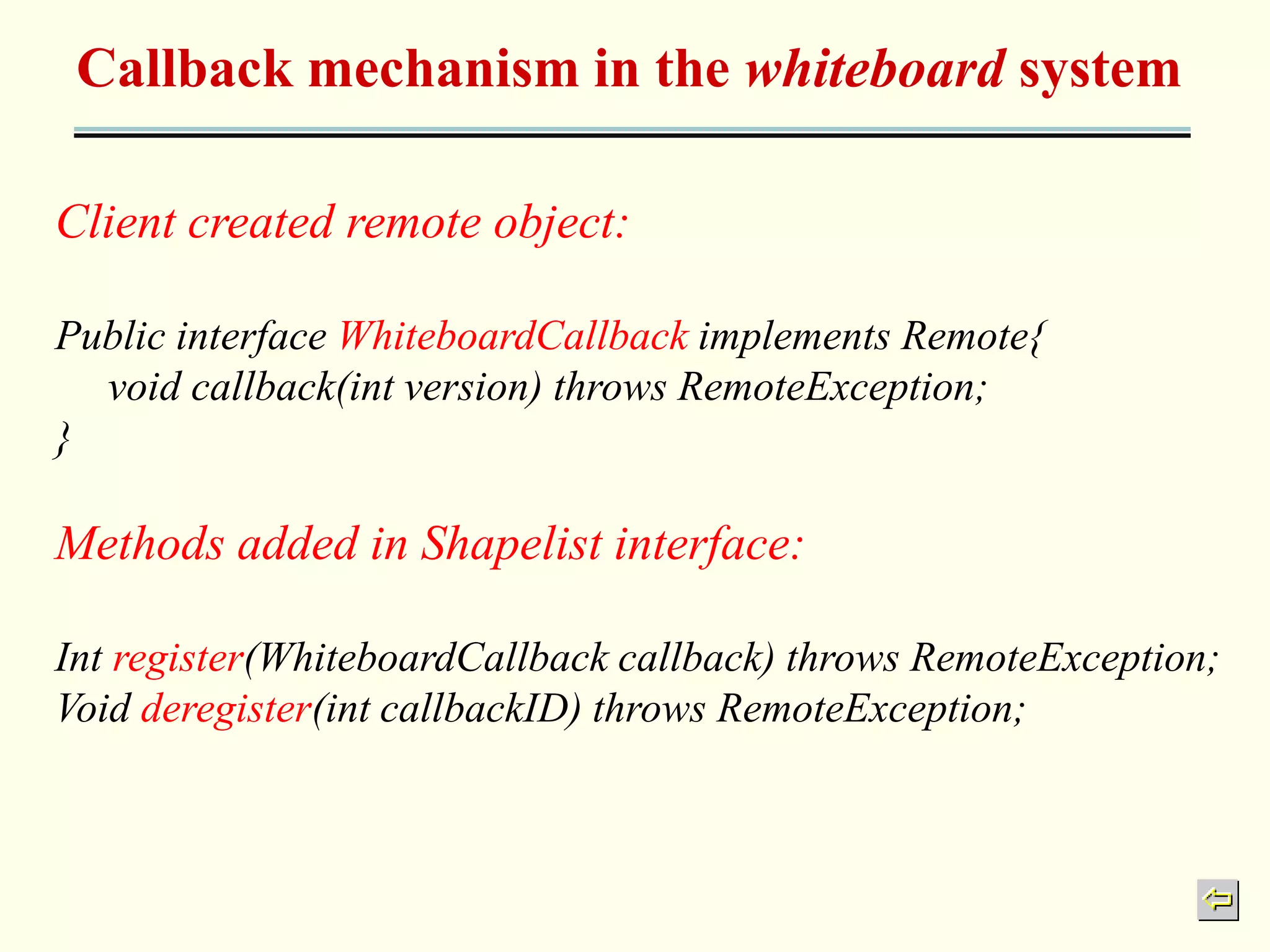This document summarizes remote procedure calls (RPC), remote method invocation (RMI), and event-based distributed programming models. It discusses RPC and RMI architectures including client stubs, server skeletons, and dispatchers. Middleware provides location and protocol transparency. Interfaces specify accessible methods. The document also covers a Java RMI case study of a shared whiteboard application that uses callbacks to notify clients of updates.

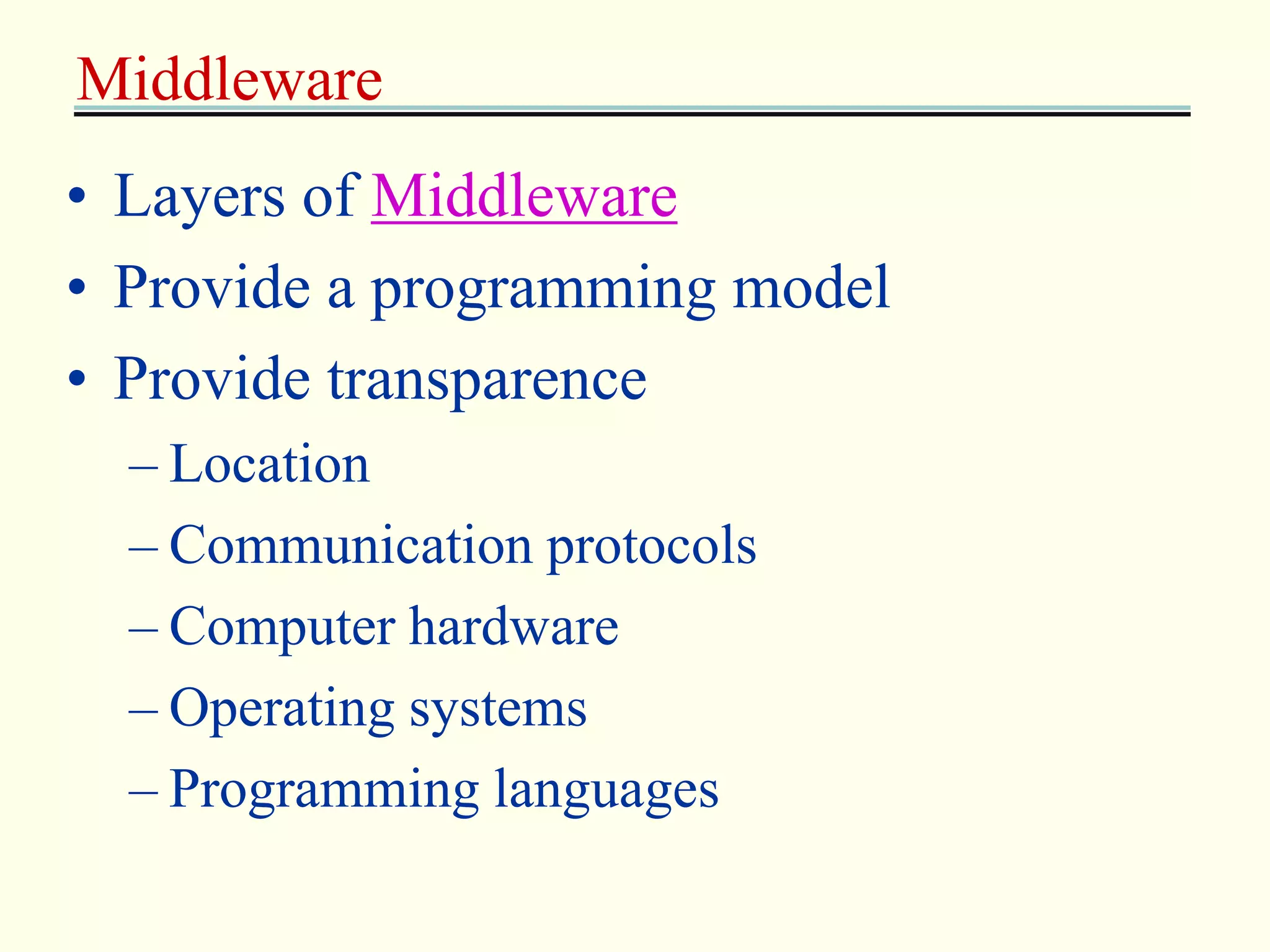
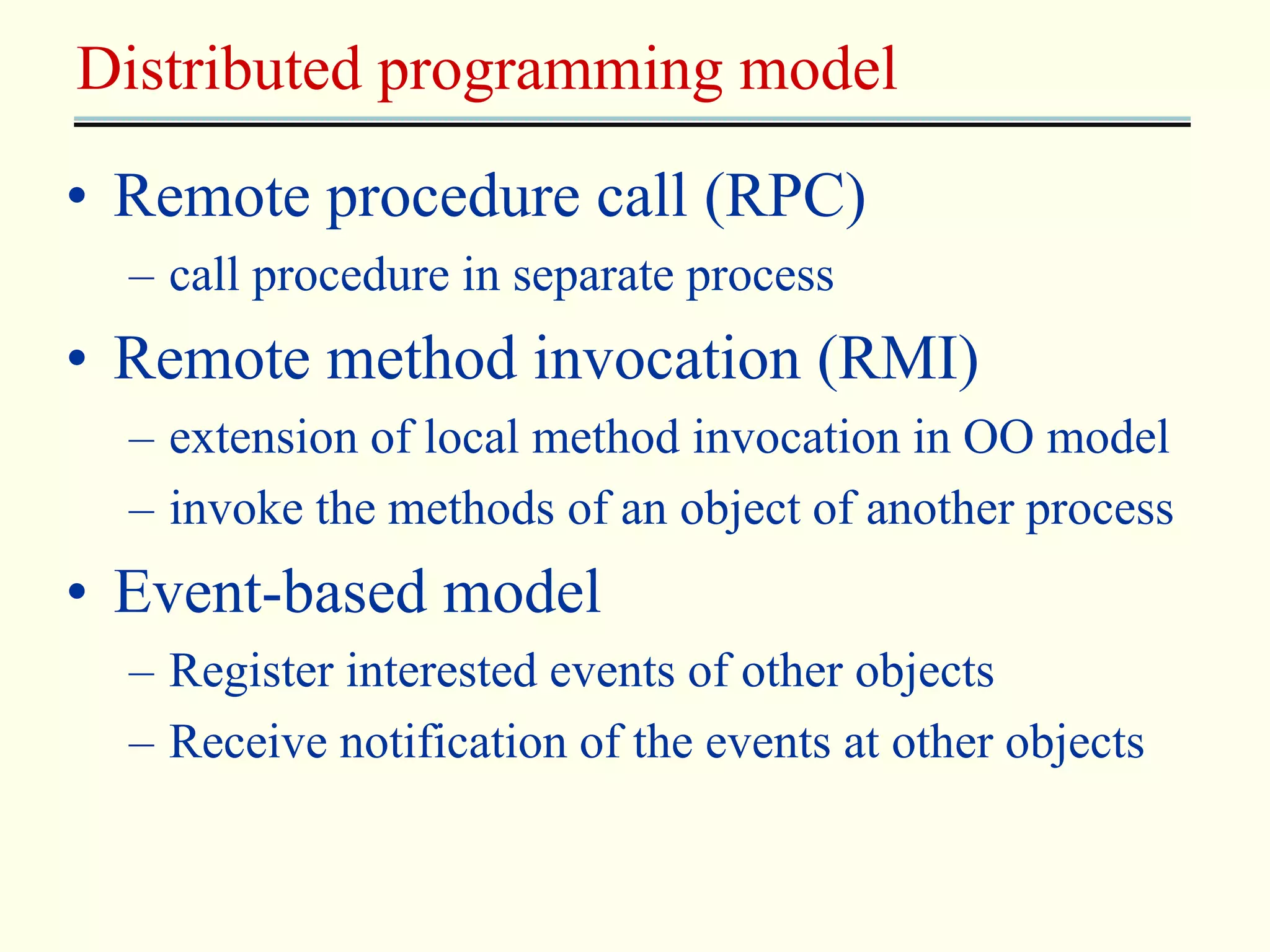

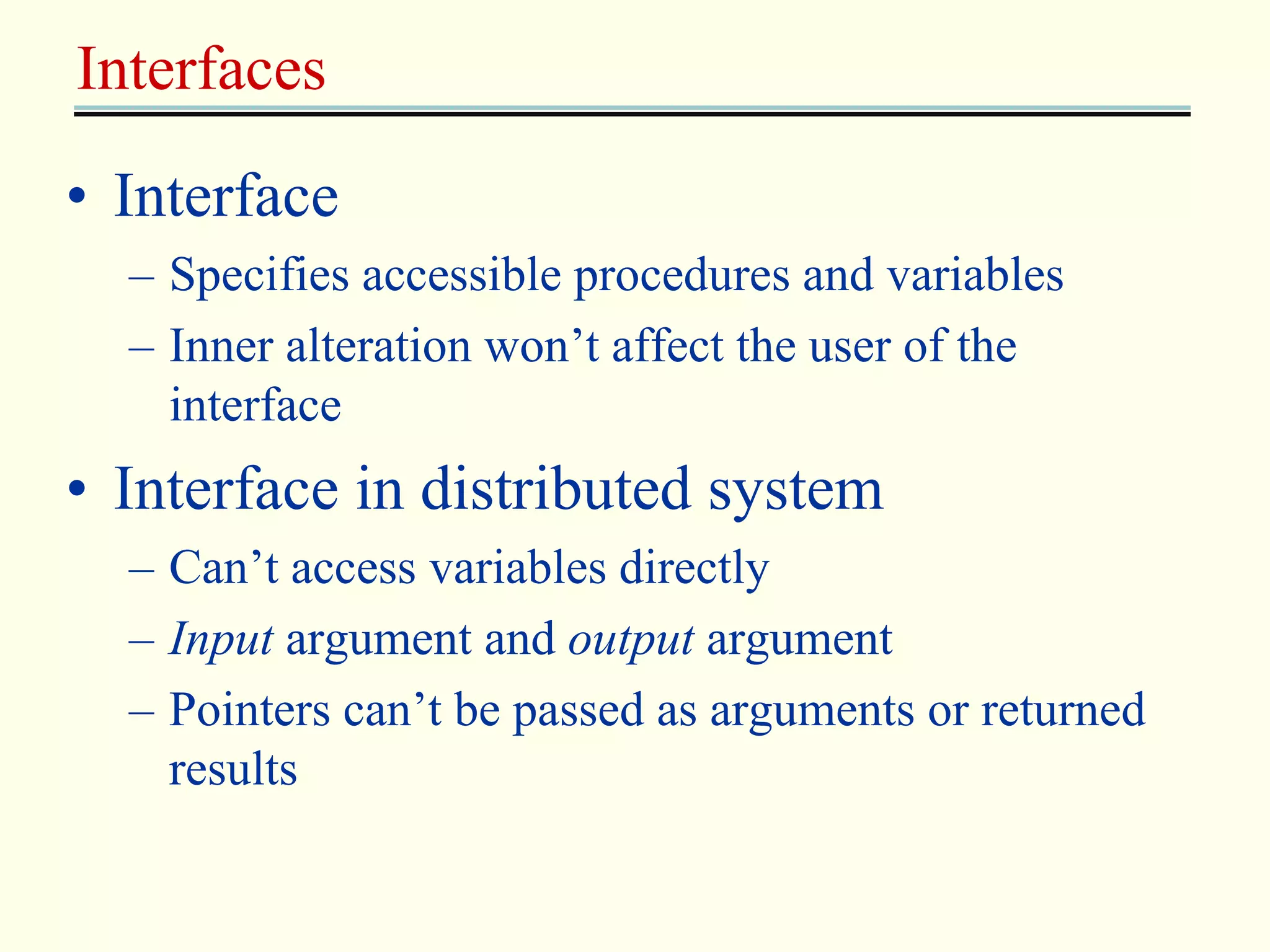


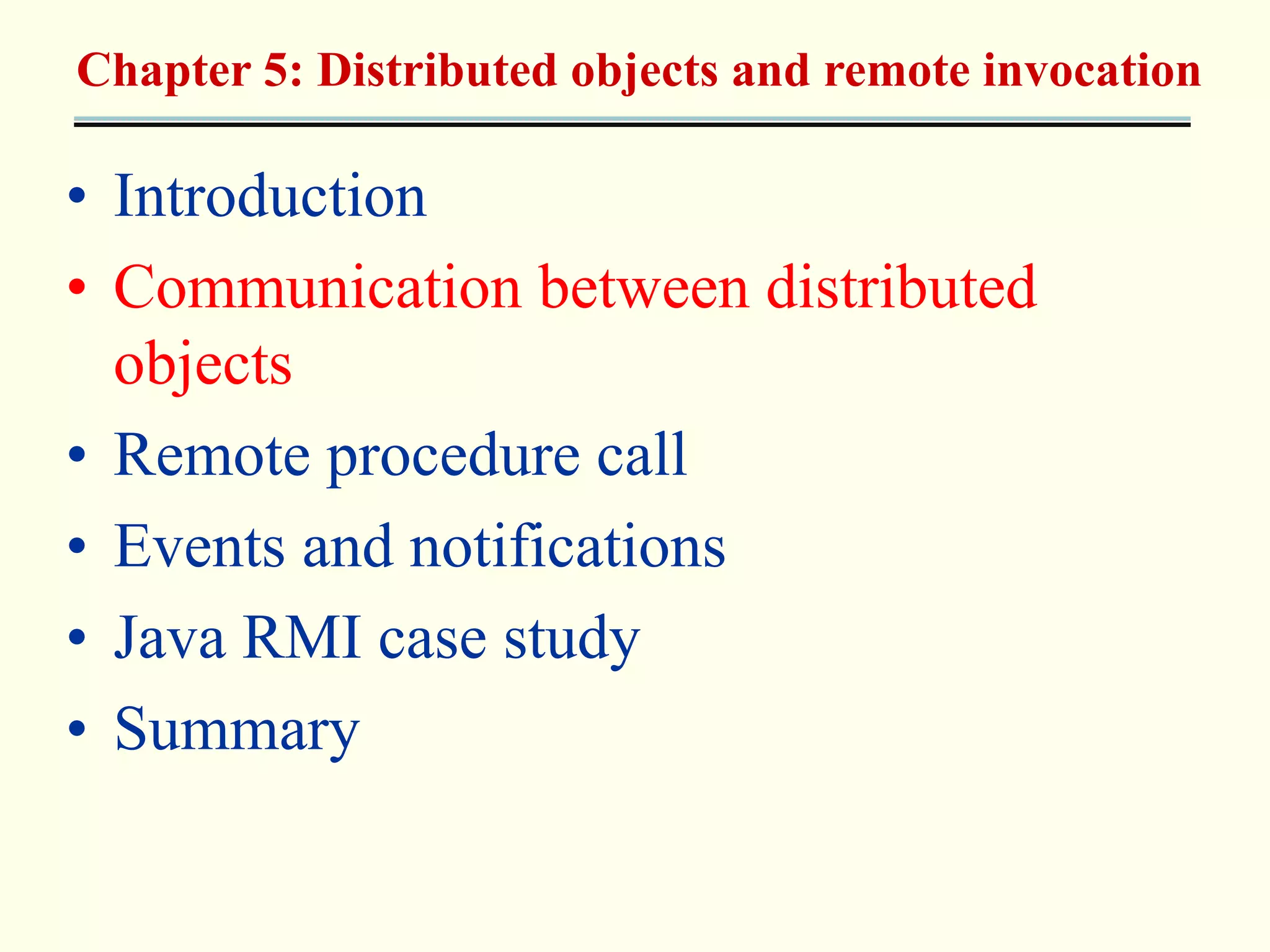
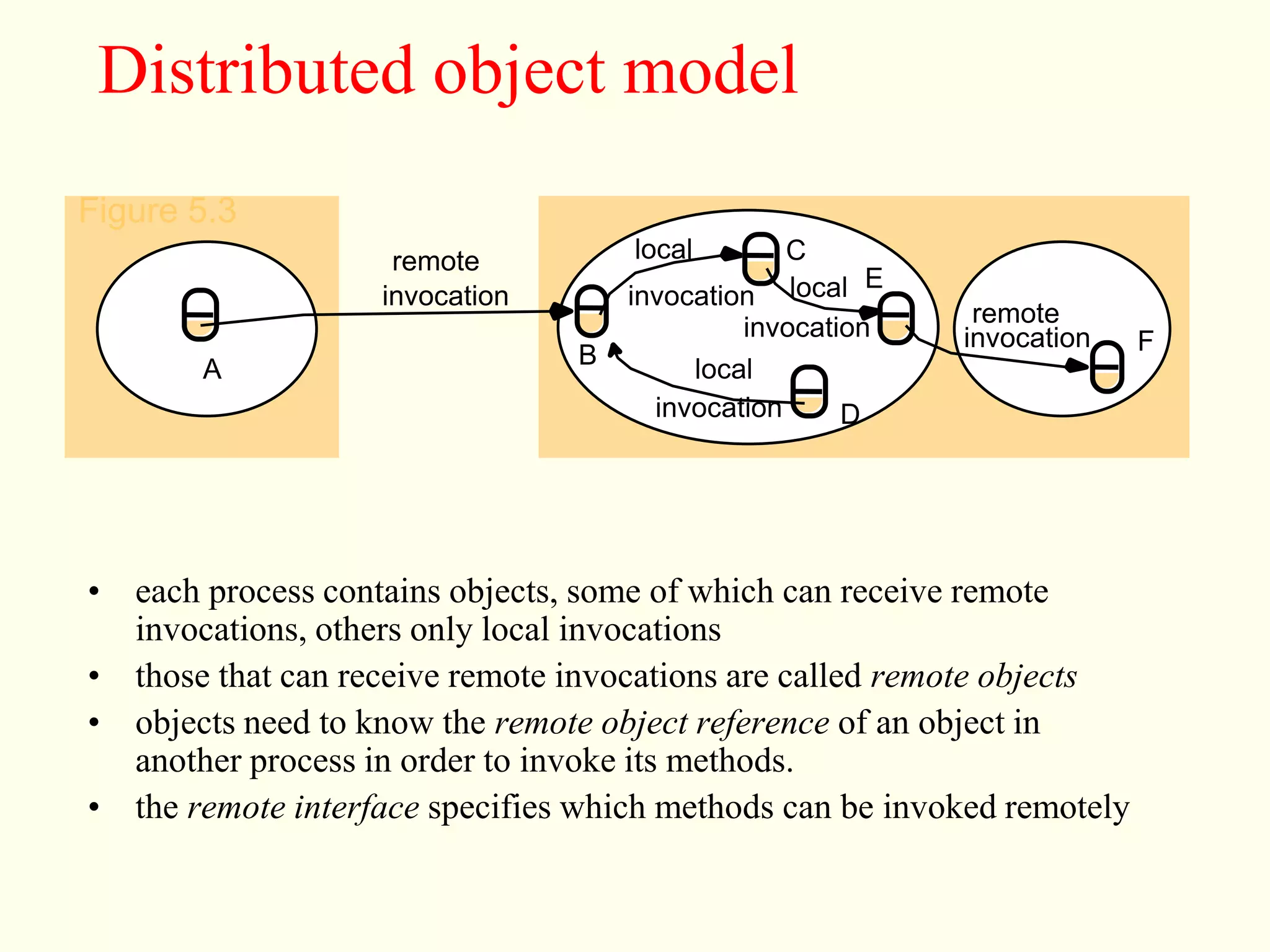

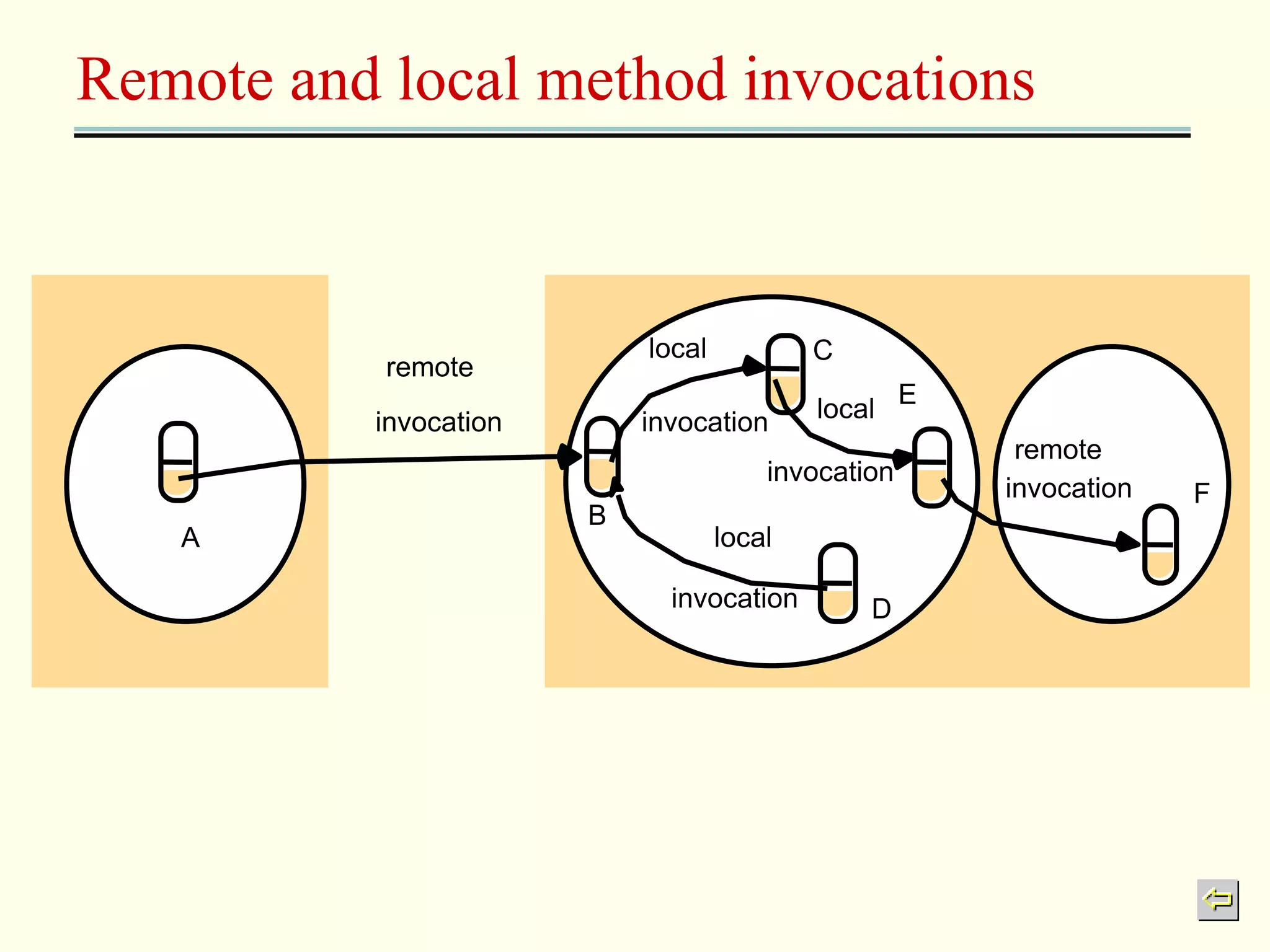
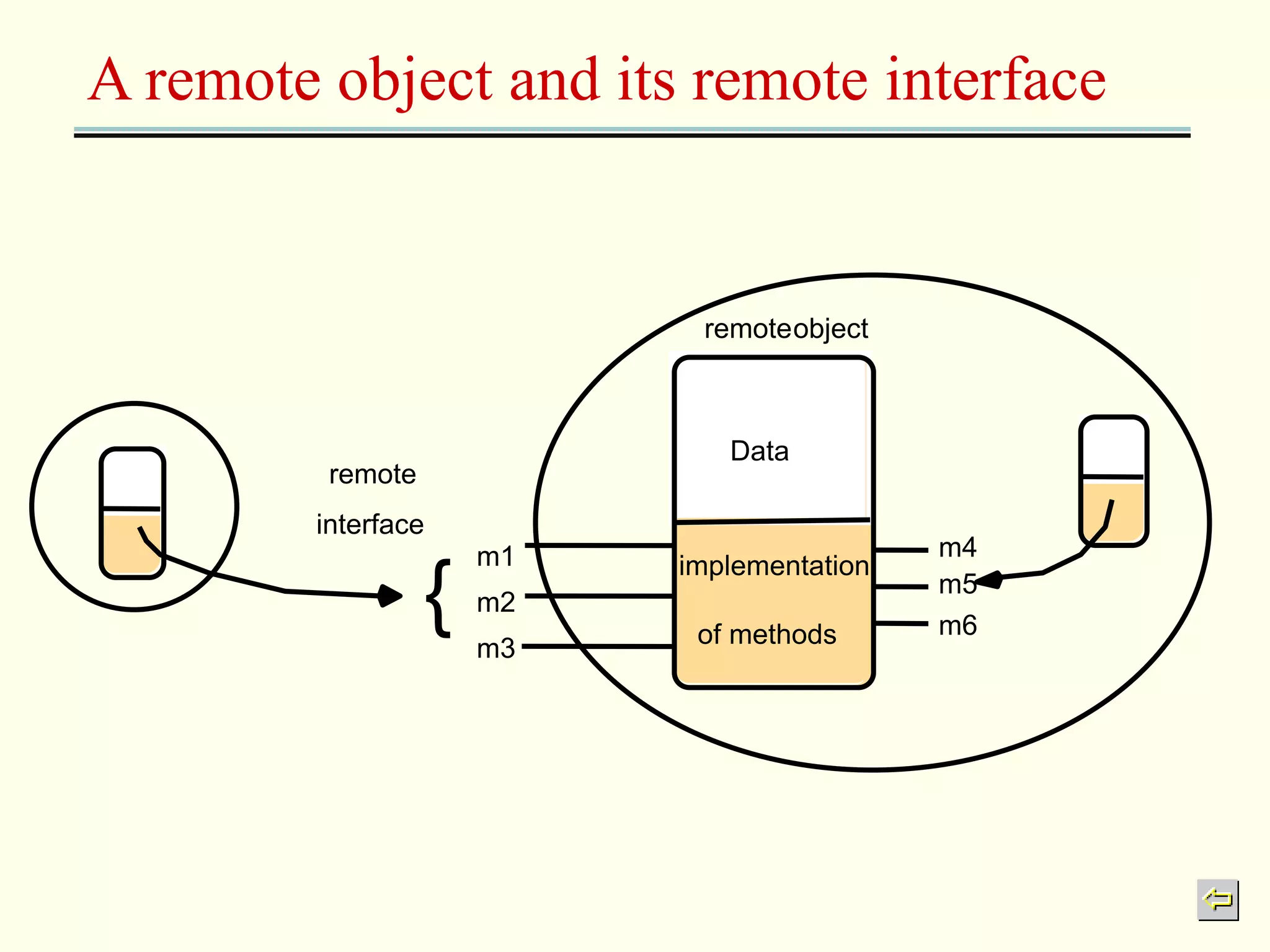
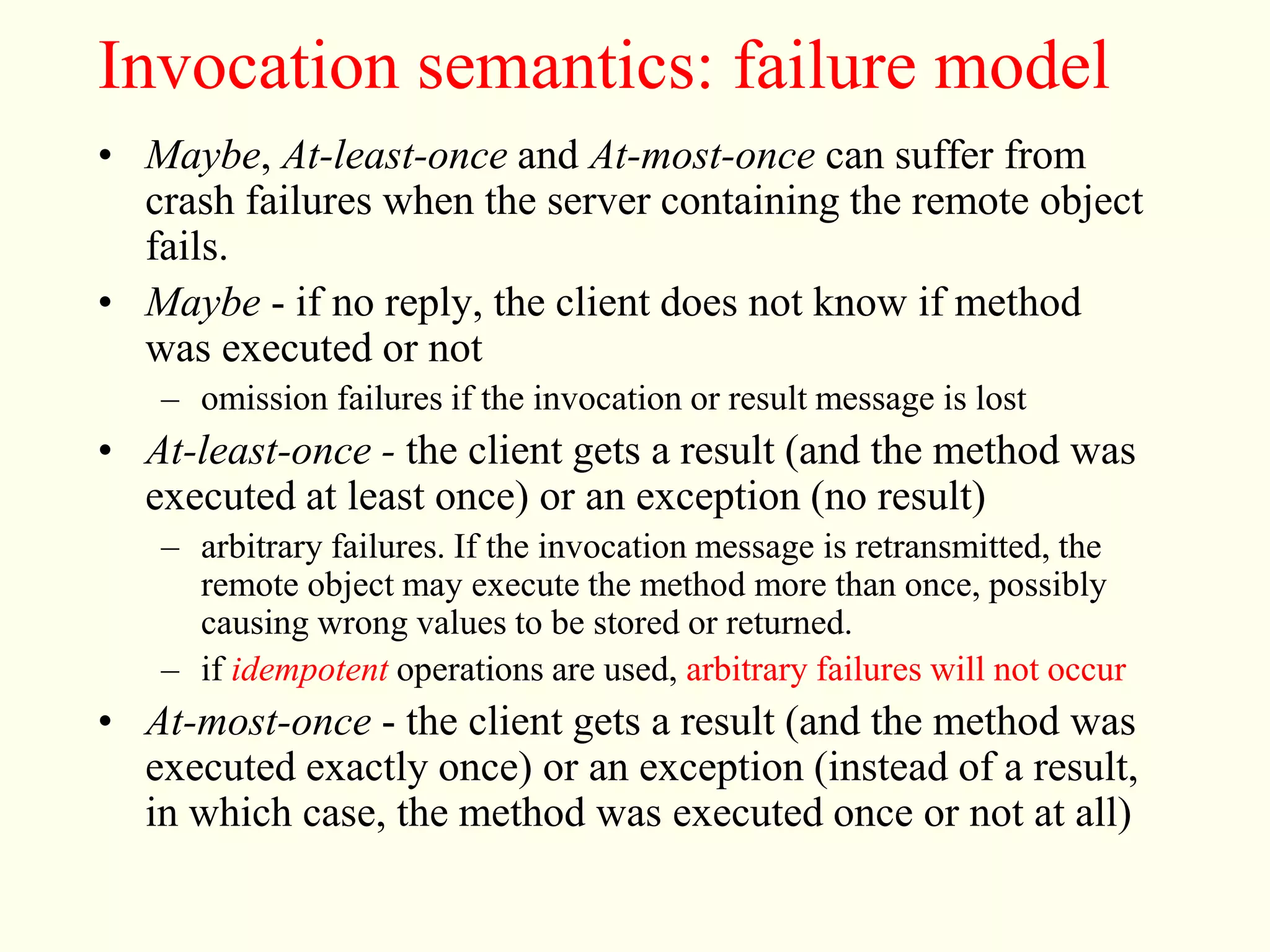
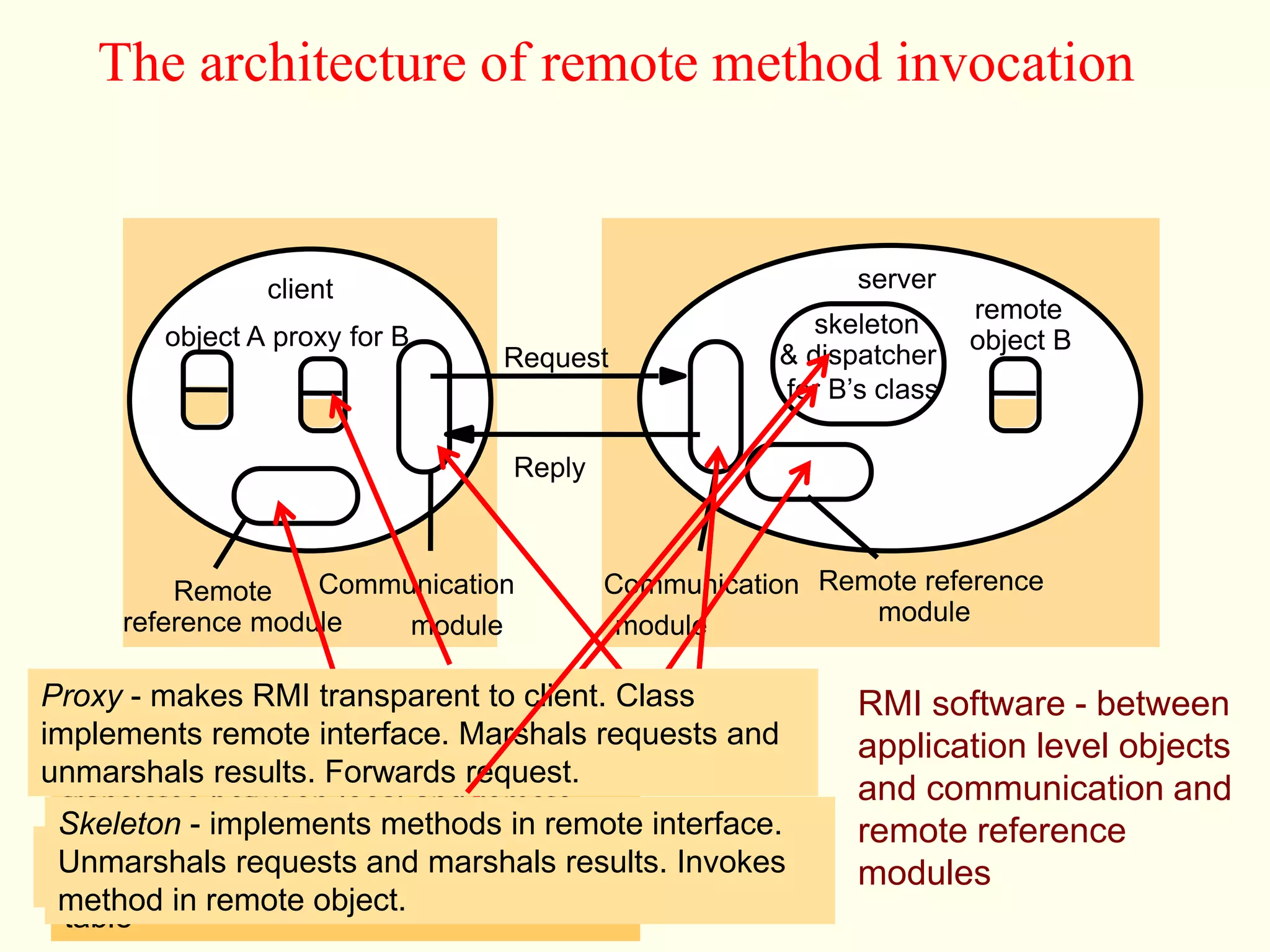
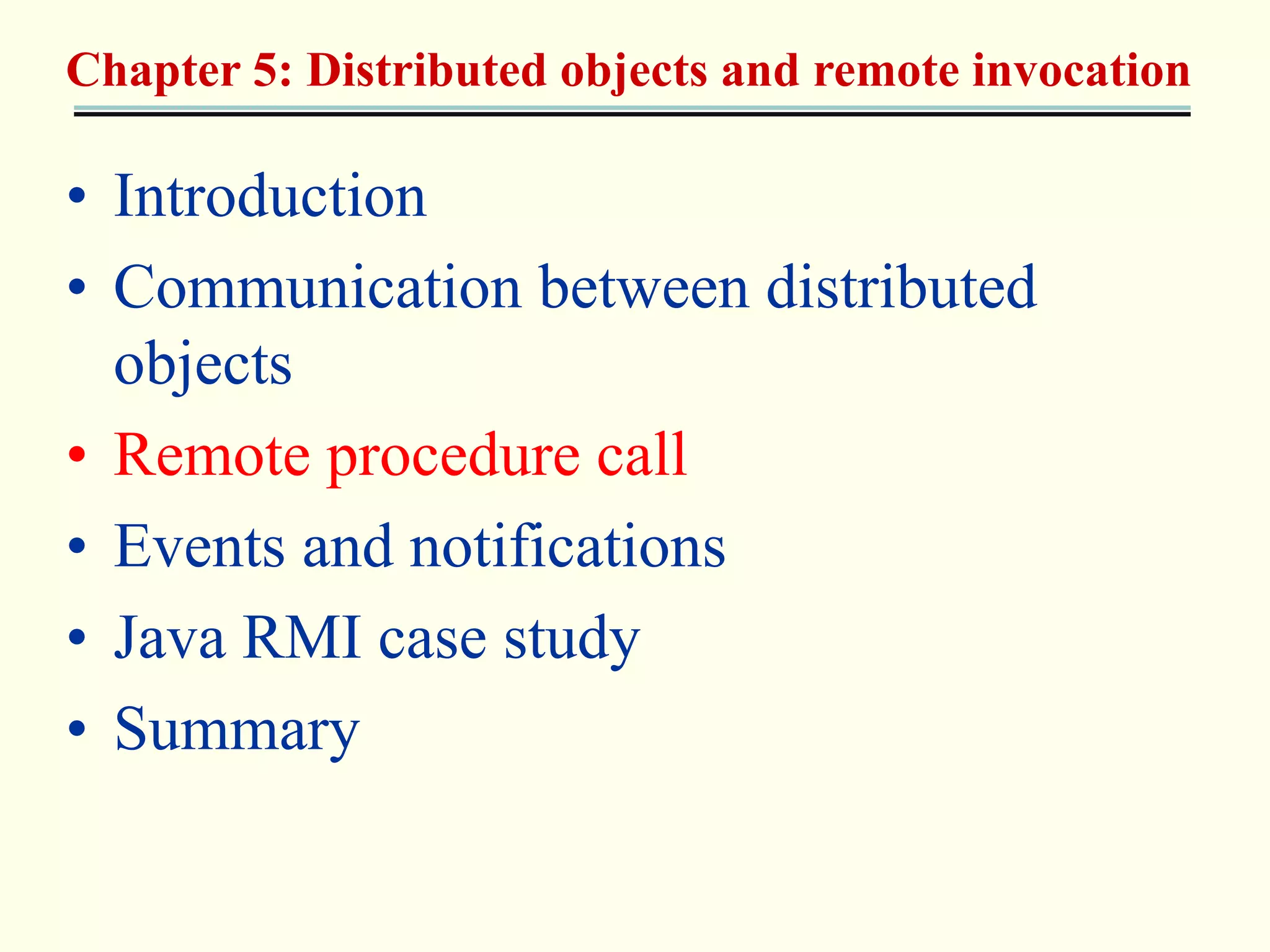
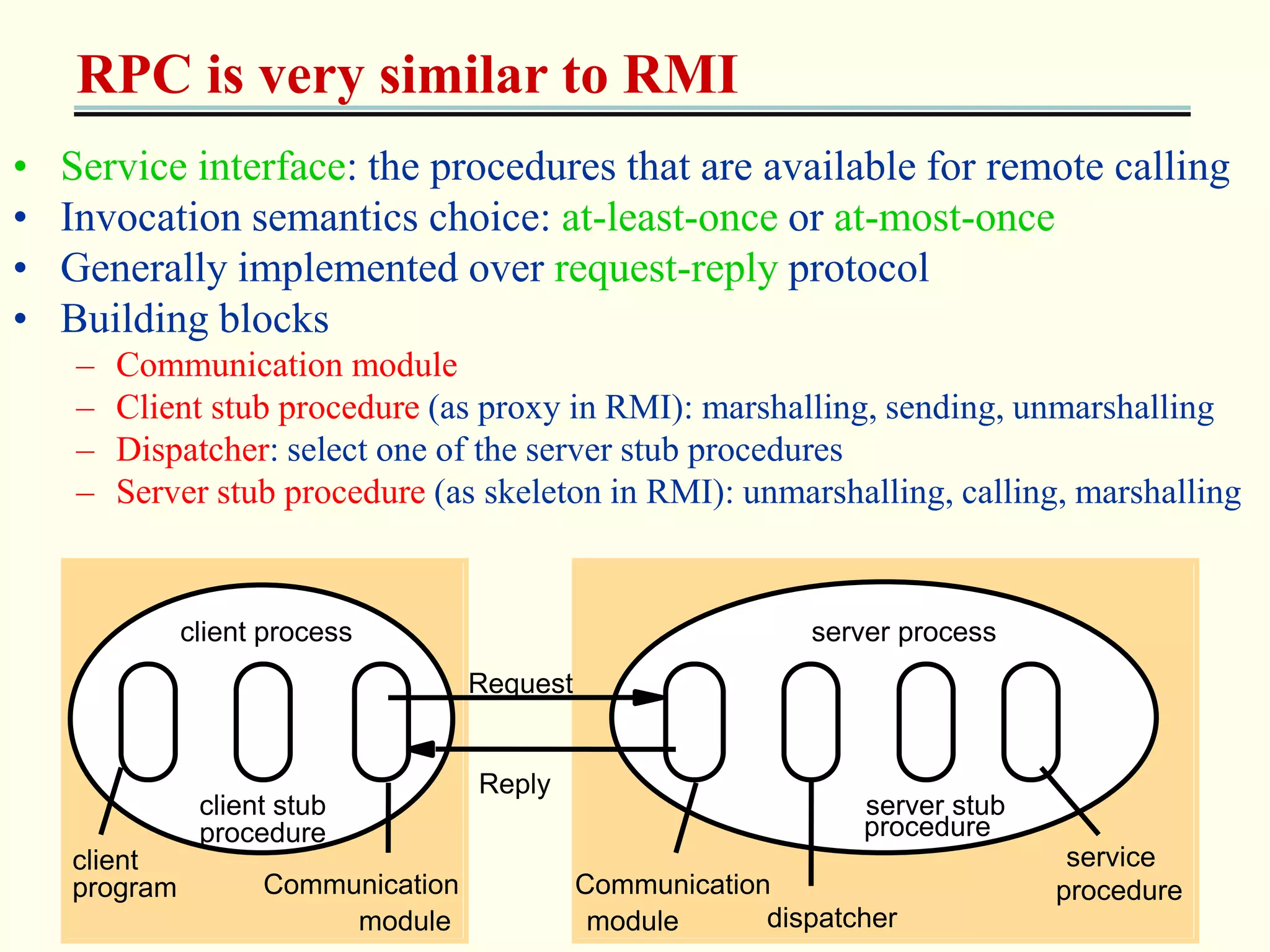
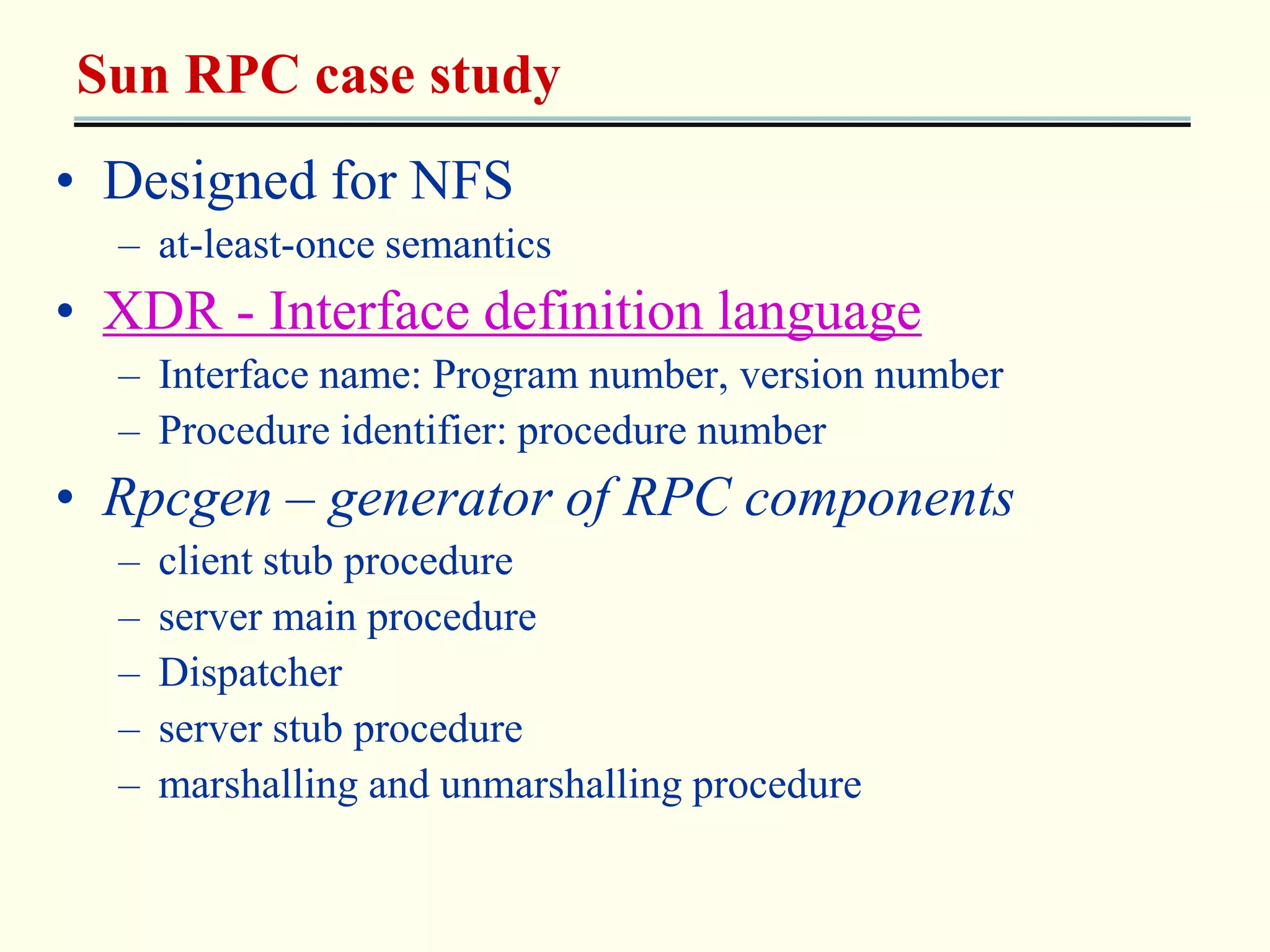
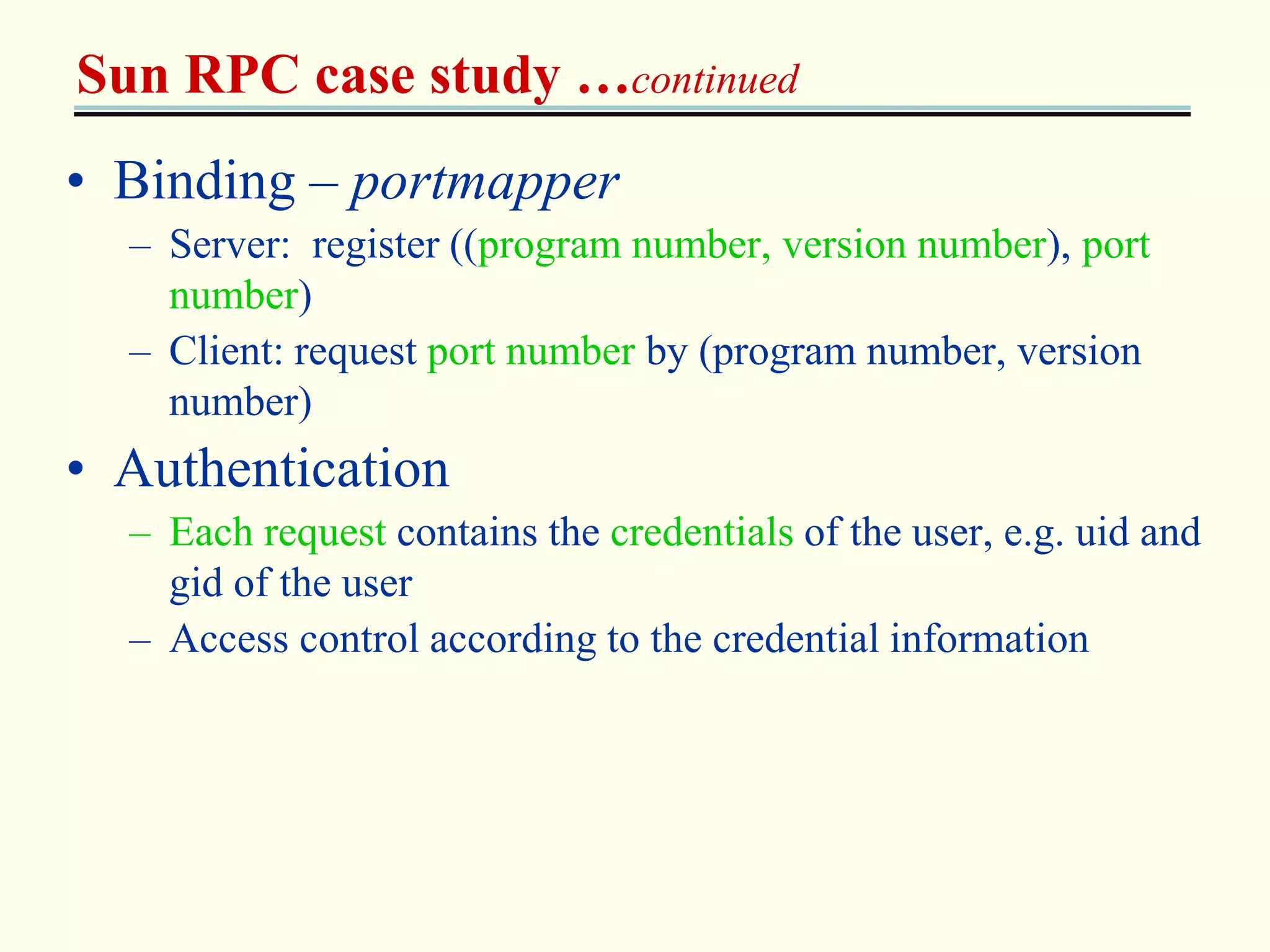
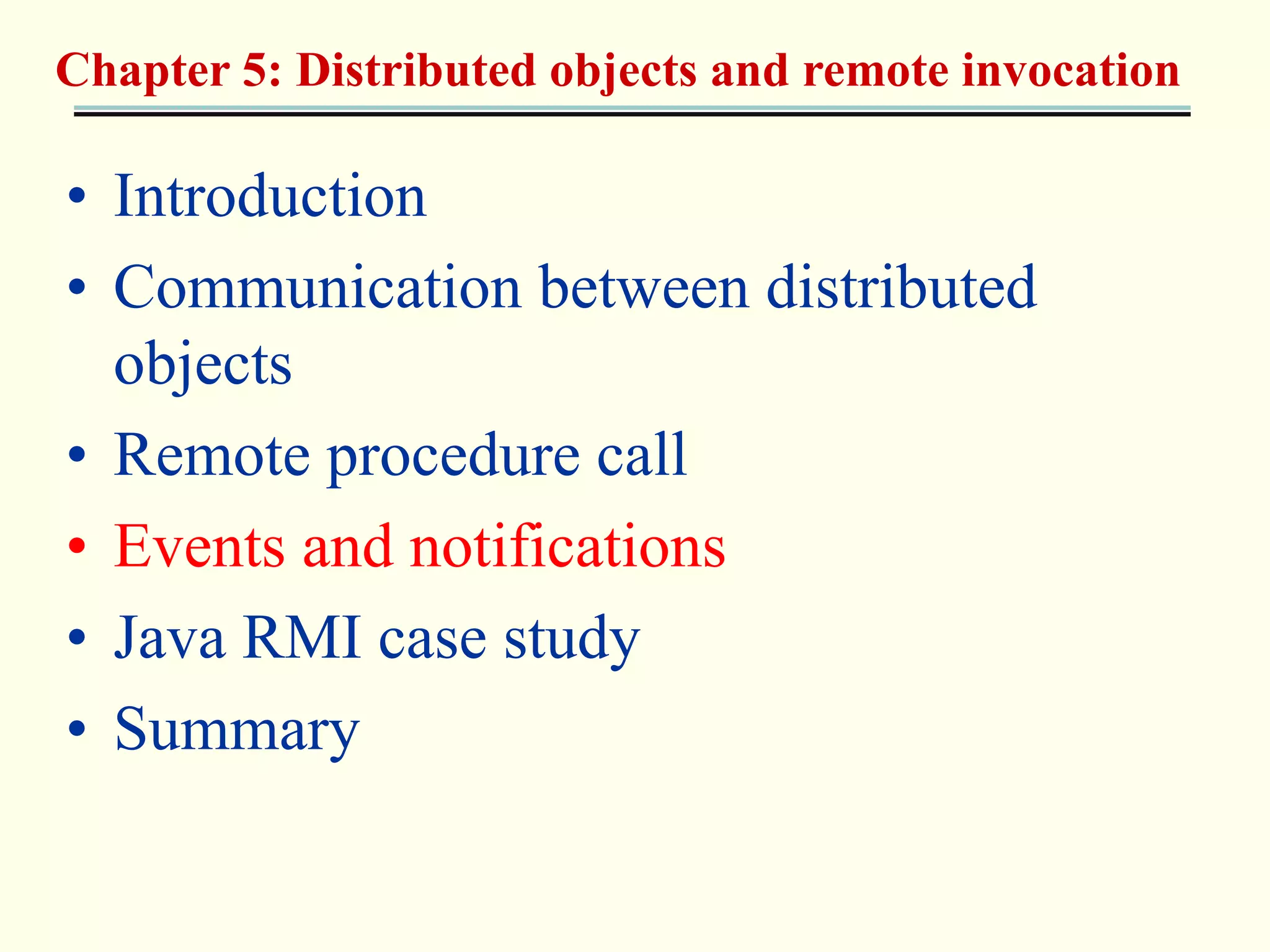
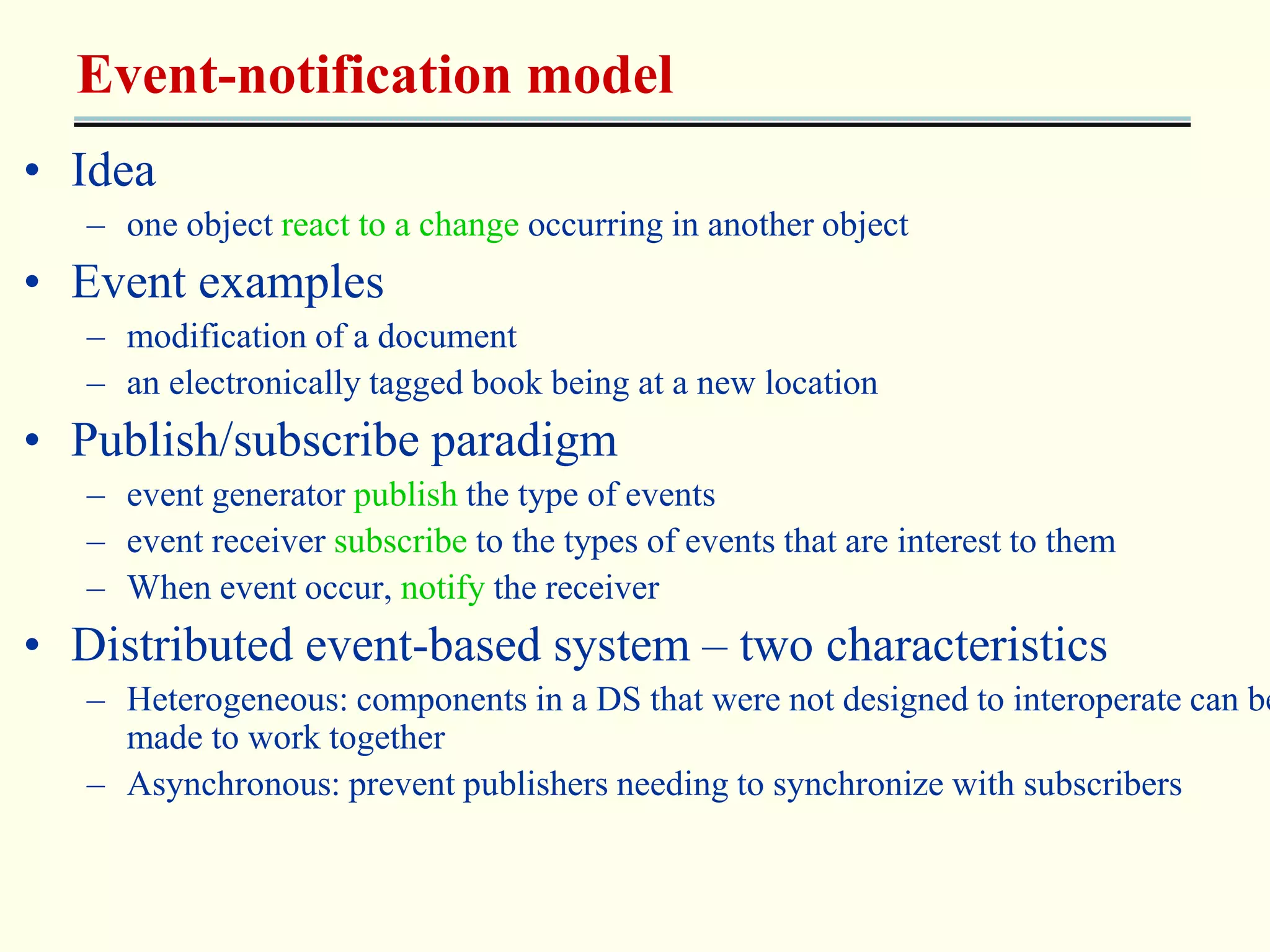
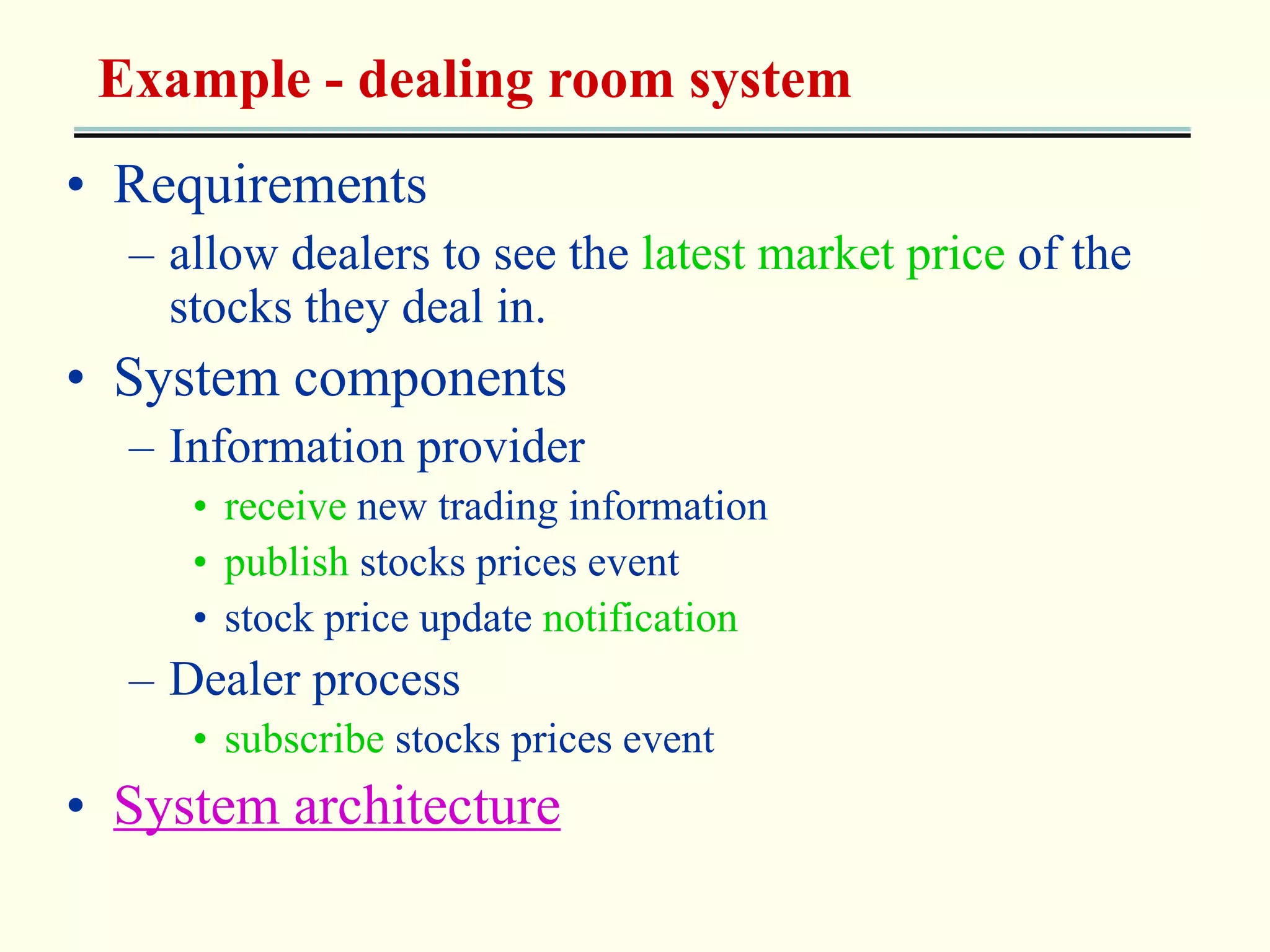
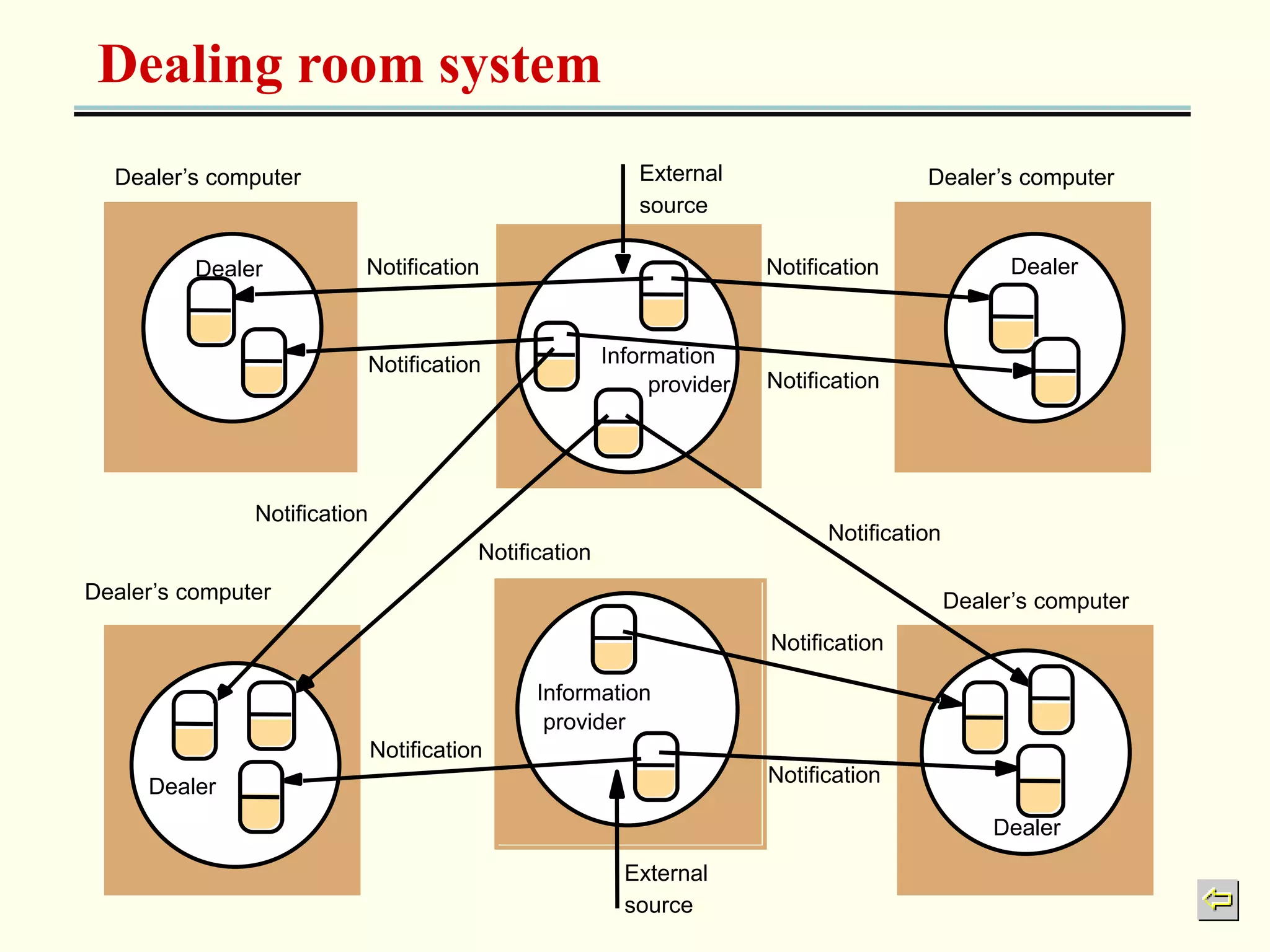

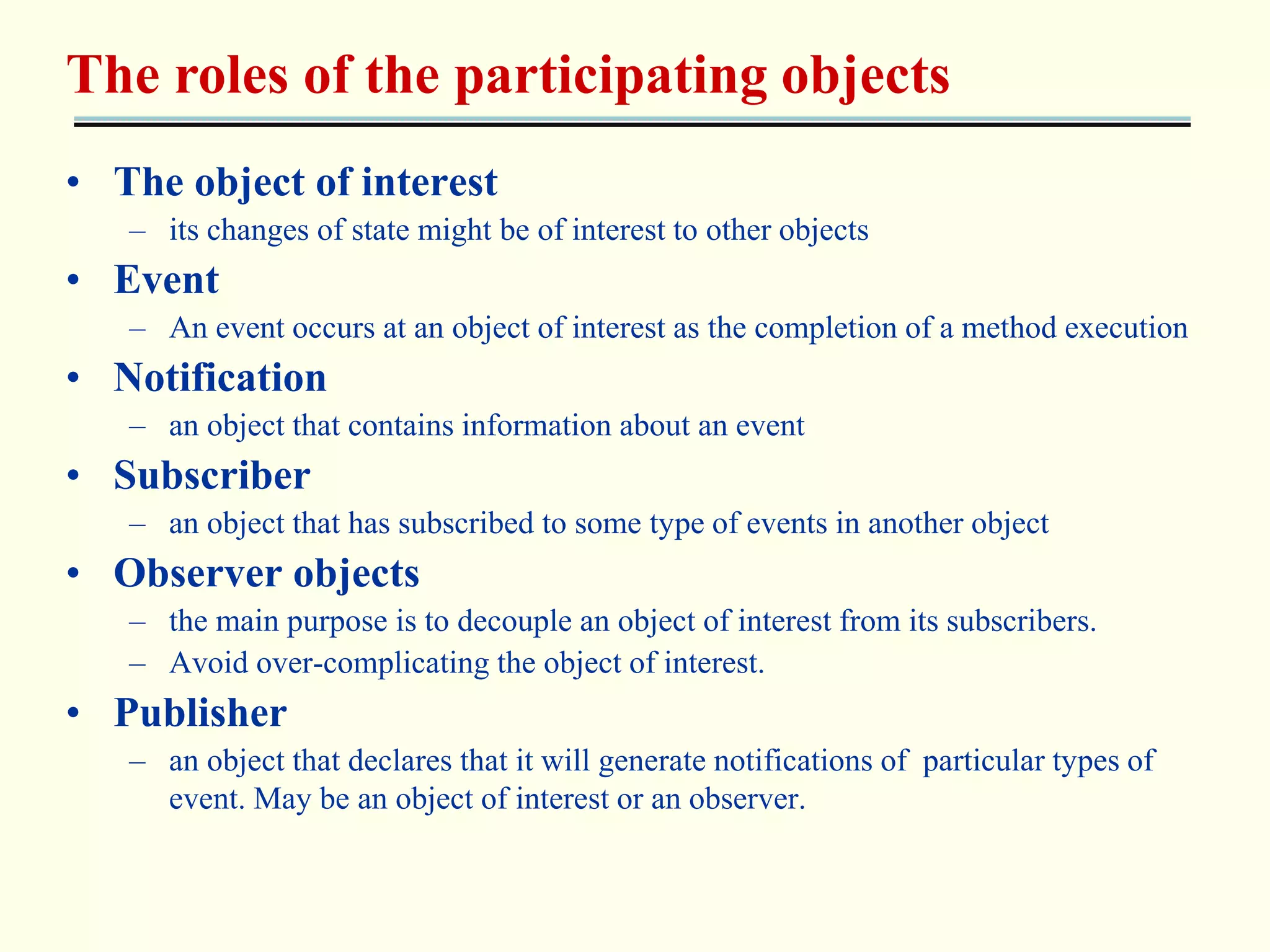
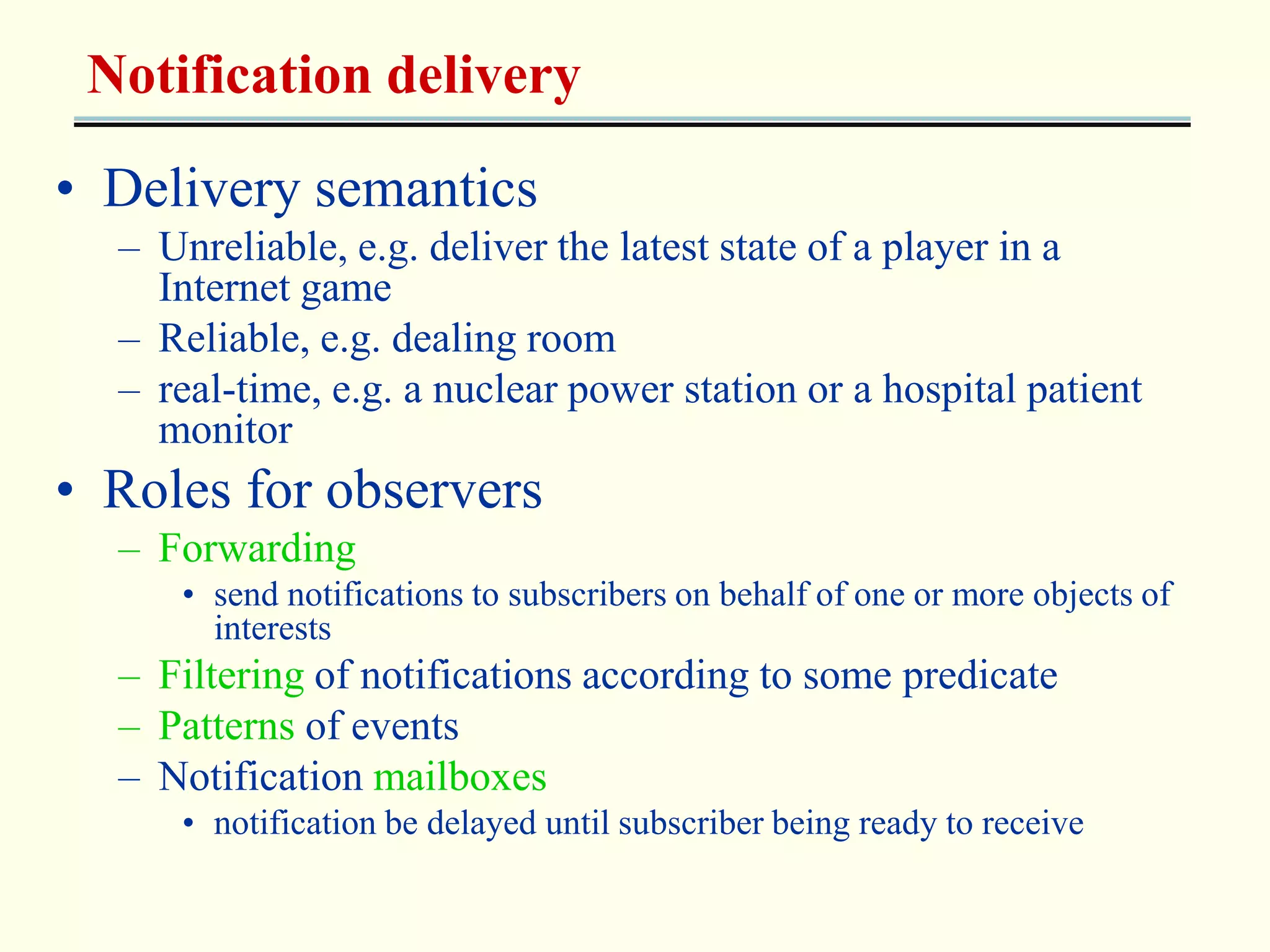
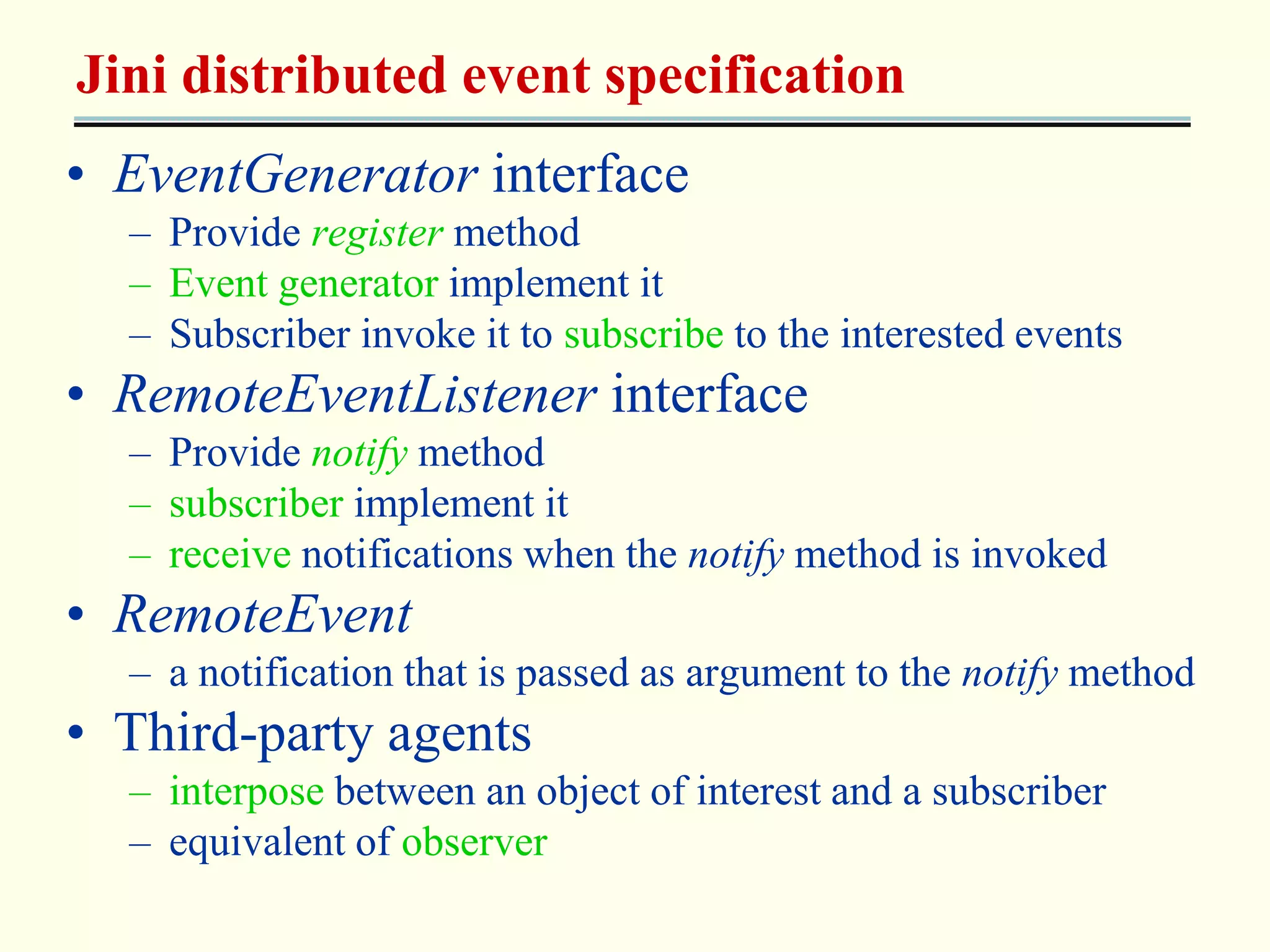
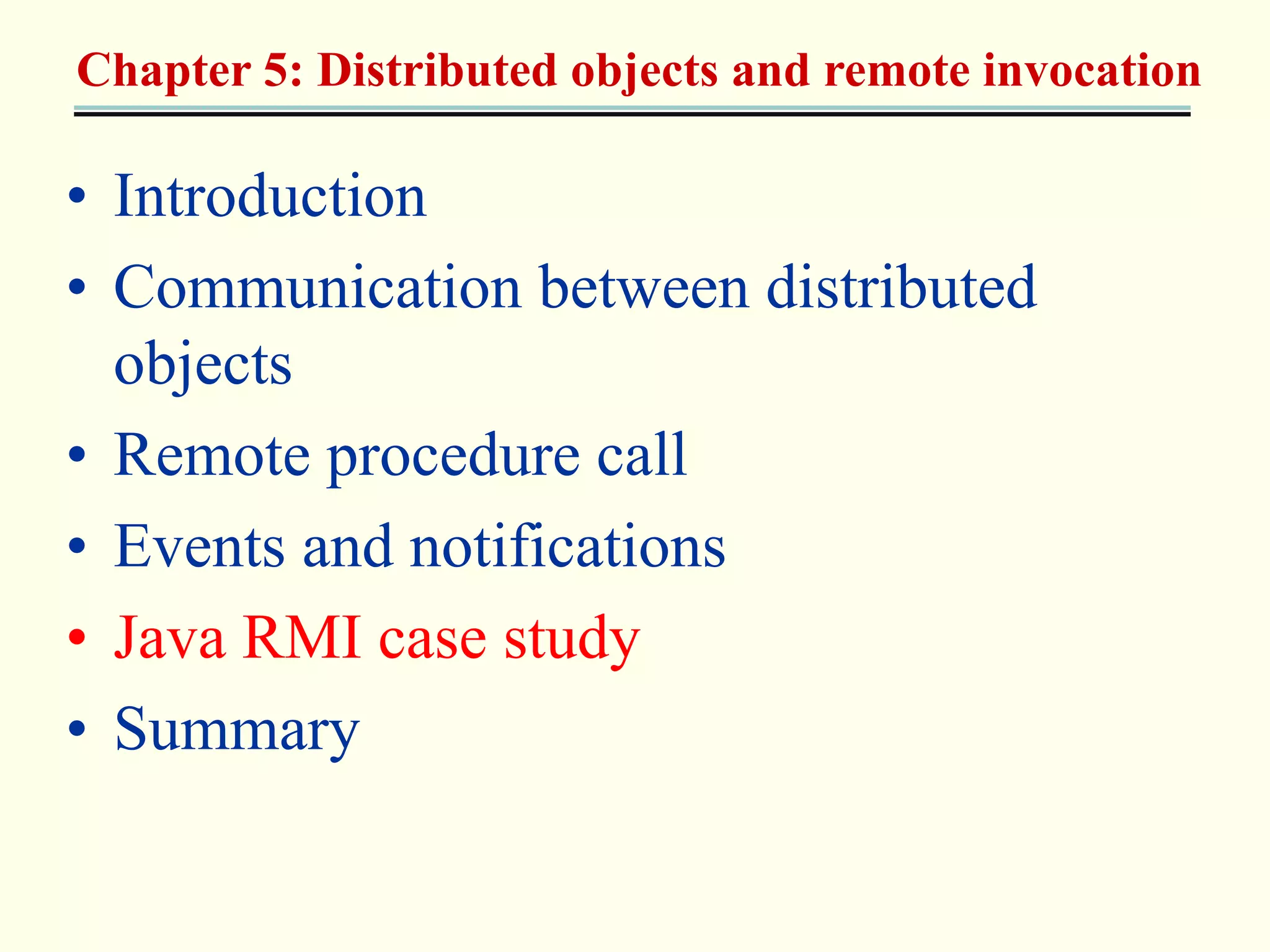

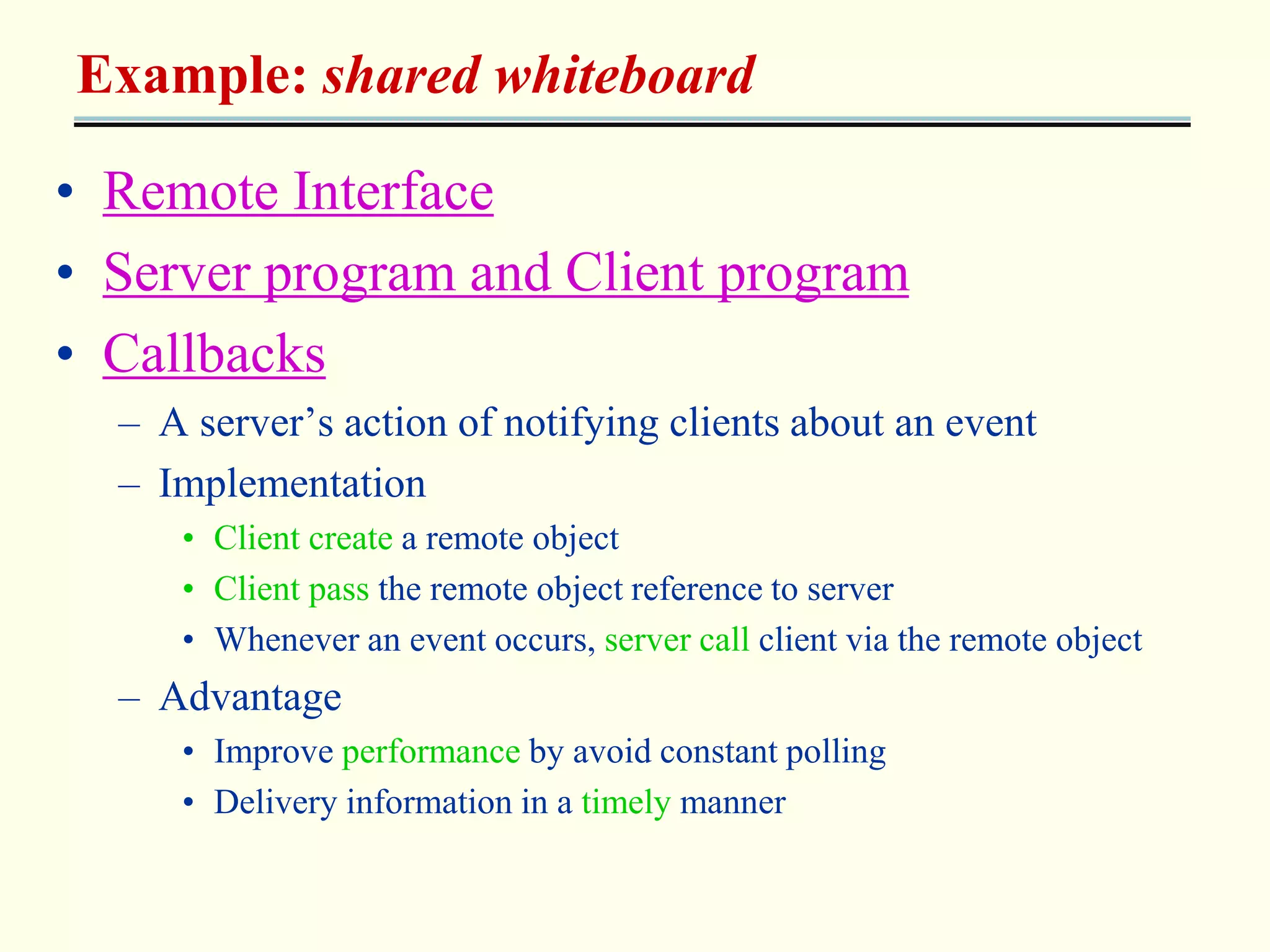

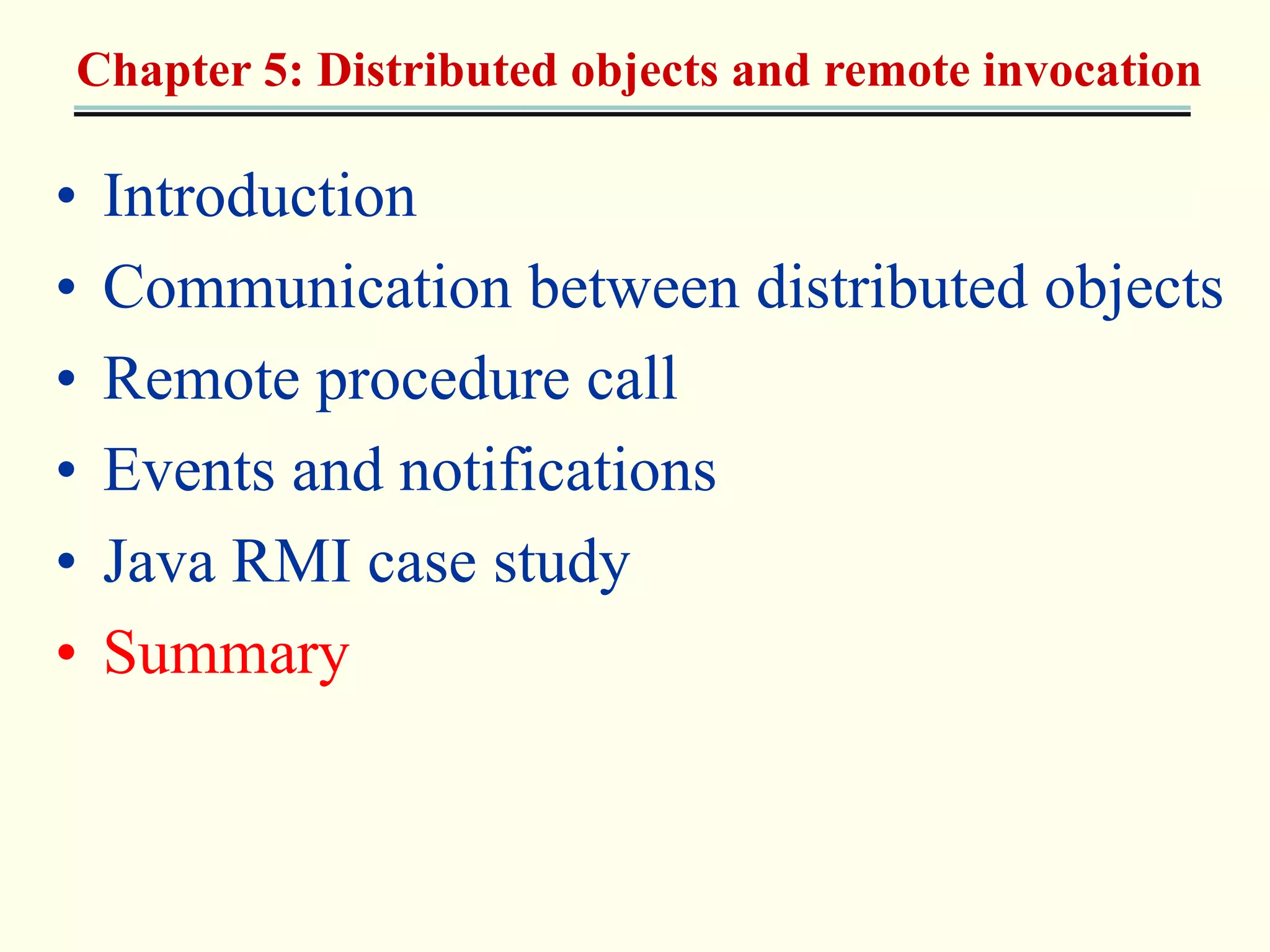

![Files interface in Sun XDR
const MAX = 1000;
typedef int FileIdentifier;
typedef int FilePointer;
typedef int Length;
struct Data {
int length;
char buffer[MAX];
};
struct writeargs {
FileIdentifier f;
FilePointer position;
Data data;
};
struct readargs {
FileIdentifier f;
FilePointer position;
Length length;
};
program FILEREADWRITE {
version VERSION {
void WRITE(writeargs)=1; 1
Data READ(readargs)=2; 2
}=2;
} = 9999;](https://image.slidesharecdn.com/dsobjectsandmodels-140910011928-phpapp01/75/Ds-objects-and-models-33-2048.jpg)
![The Naming class of Java RMIregistry
void rebind (String name, Remote obj)
This method is used by a server to register the identifier of a remote object by
name, as shown in Figure 15.13, line 3.
void bind (String name, Remote obj)
This method can alternatively be used by a server to register a remote object
by name, but if the name is already bound to a remote object reference an
exception is thrown.
void unbind (String name, Remote obj)
This method removes a binding.
Remote lookup(String name)
This method is used by clients to look up a remote object by name, as shown
in Figure 15.15 line 1. A remote object reference is returned.
String [] list()
This method returns an array of Strings containing the names bound in the
registry.](https://image.slidesharecdn.com/dsobjectsandmodels-140910011928-phpapp01/75/Ds-objects-and-models-34-2048.jpg)
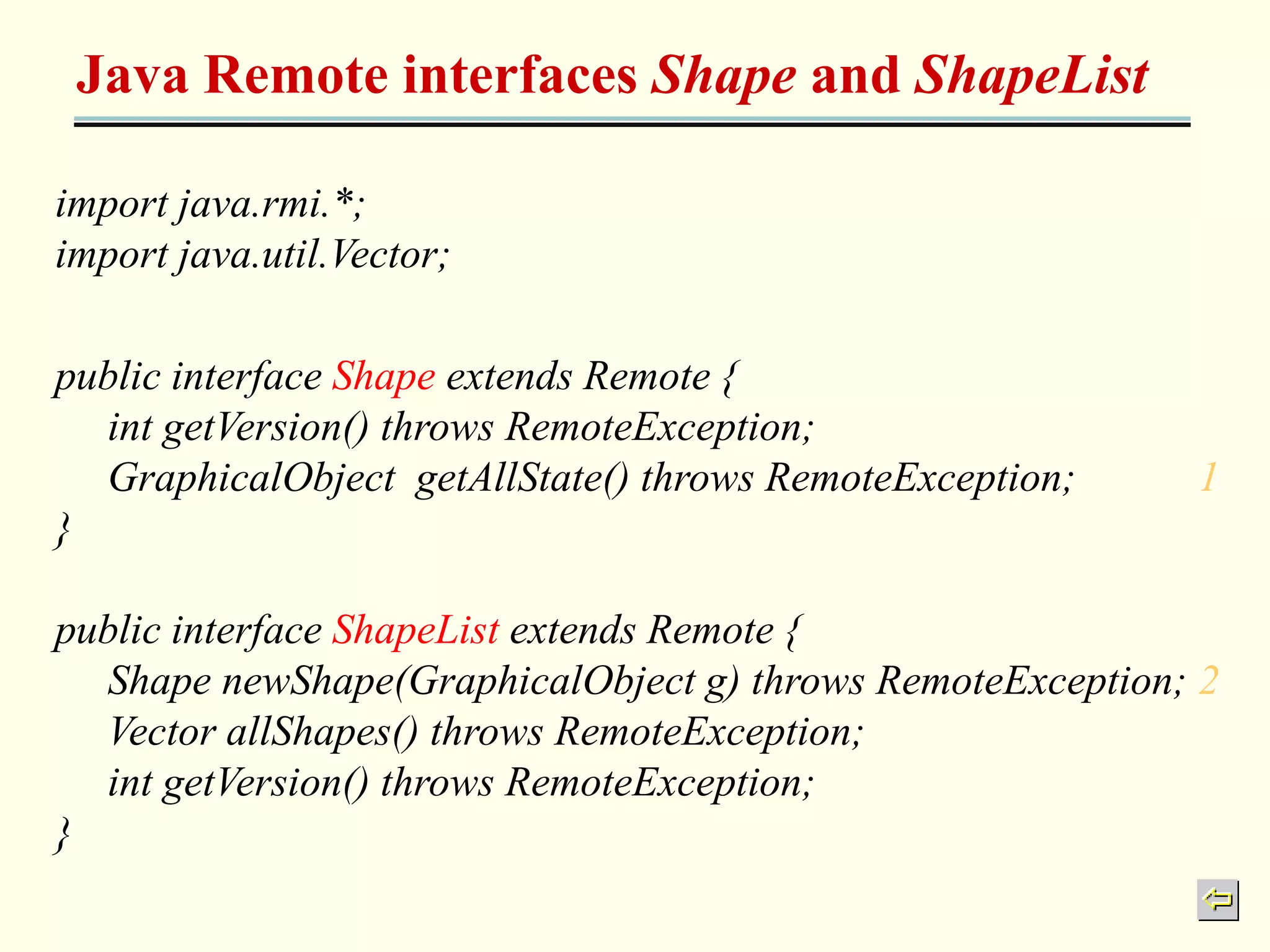
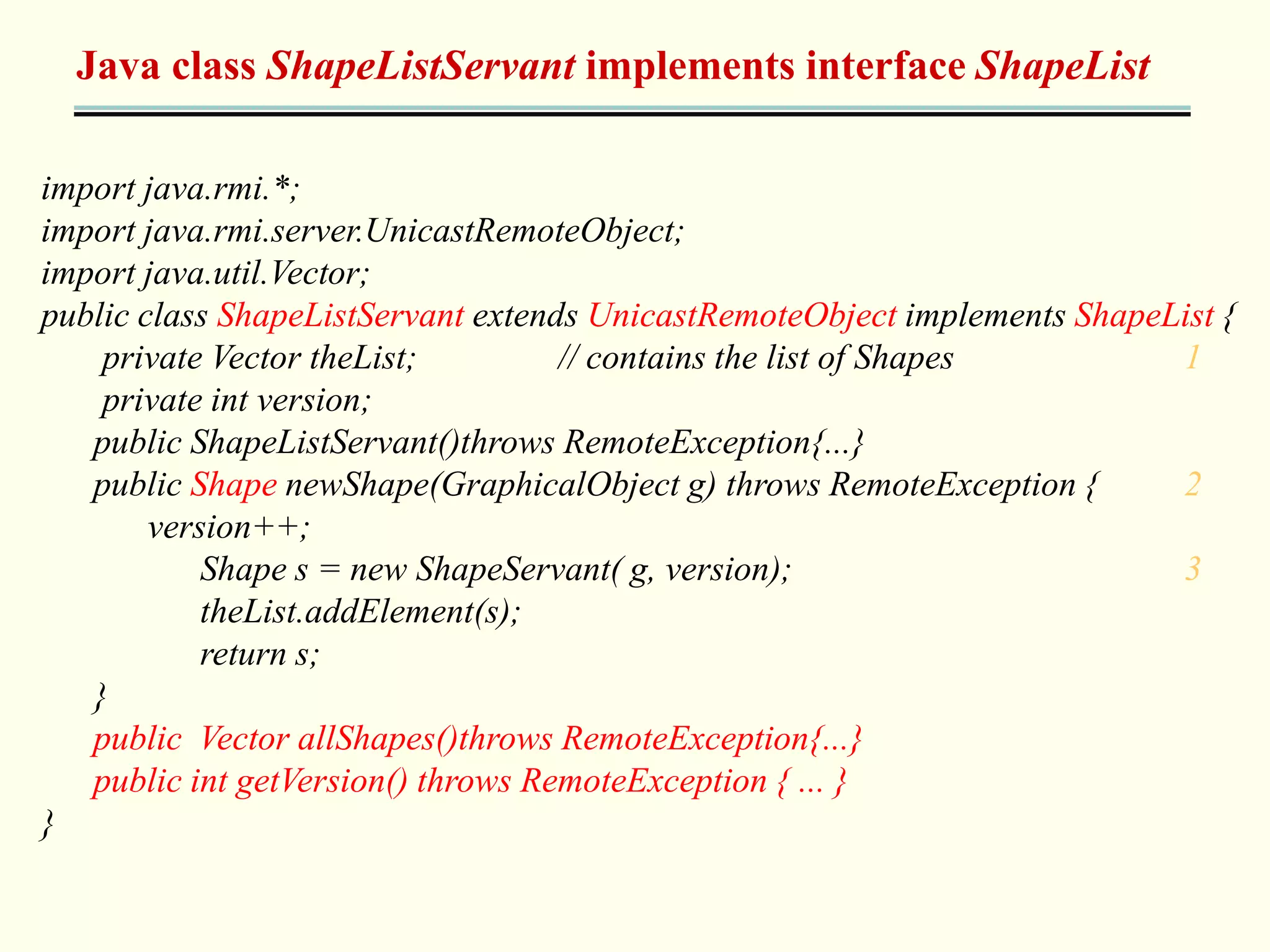
![Java class ShapeListServer with main method
import java.rmi.*;
public class ShapeListServer{
public static void main(String args[]){
System.setSecurityManager(new RMISecurityManager());
try{
ShapeList aShapeList = new ShapeListServant(); 1
Naming.rebind("Shape List", aShapeList ); 2
System.out.println("ShapeList server ready");
}catch(Exception e) {
System.out.println("ShapeList server main " + e.getMessage());}
}
}](https://image.slidesharecdn.com/dsobjectsandmodels-140910011928-phpapp01/75/Ds-objects-and-models-37-2048.jpg)
![Java client of ShapeList
import java.rmi.*;
import java.rmi.server.*;
import java.util.Vector;
public class ShapeListClient{
public static void main(String args[]){
System.setSecurityManager(new RMISecurityManager());
ShapeList aShapeList = null;
try{
aShapeList = (ShapeList) Naming.lookup("//bruno.ShapeList") ; 1
Vector sList = aShapeList.allShapes(); 2
} catch(RemoteException e) {System.out.println(e.getMessage());
}catch(Exception e) {System.out.println("Client: " + e.getMessage());}
}
}](https://image.slidesharecdn.com/dsobjectsandmodels-140910011928-phpapp01/75/Ds-objects-and-models-38-2048.jpg)
